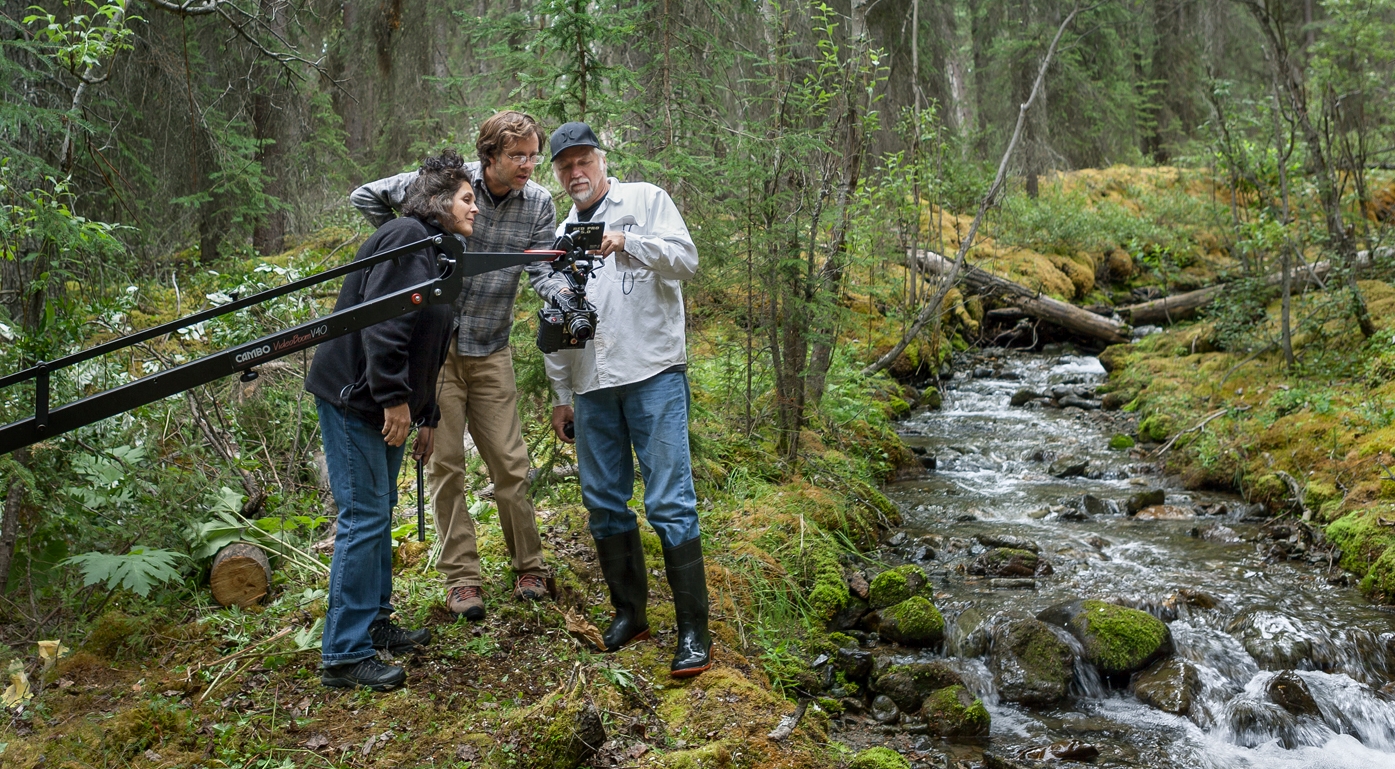Lights, camera, spectacular success – backlash. So it goes with the films co-created by Ed Burtynsky, Jennifer Baichwal and Nicholas de Pencier. The trio is launching Anthropocene, the third in their eco-conscious trilogy that began with Manufactured Landscapes and continued with Watermark, which won the Toronto Critics Film Associations’s best Canadian feature award and $100,000 from media giant Rogers.
The new film, with research assistant from the Anthropocene Working Group and anchored by Burtynsky’s arresting photographic vision of the planet’s devastation at the hands of humans, makes the argument that we’ve moved away from the Holocene Epoch, when the forces of nature transformed our earth, to the Epoch of the Anthropocene, when major changes to our landscape are primarily wrought by man-made technologies and waste we are responsible for as human beings.
The crew travelled to, among other places, the Russian metal mines in Norilsk and potash mines in the Ural mountains, lithium ponds in the Atacoma desert and African locations where huge stacks of ivory elephant tusks are burned in defiance of poachers.
Like their previous two documentaries, it is terribly beautiful to watch. The stockpiled tusks look like giant sculptures of flowers, the mines like hallucinatory paintings and the lithium ponds, shot from above, like Mondrian paintings, but with more colour. And people are starting to think that’s problematic. One critic complained that the documentaries “aestheticize” ecological disaster, his way of saying that the filmmakers’ practice borders on exploitation.
I asked the threesome the question about their films’ beauty neutrally, just wondering when they developed the idea to make a spectacle out of our environmental crisis. But I get the sense that the team is feeling sensitive about the issue.
“You can make the argument that formally the film should be ugly or jarring because these places could be perceived as ugly or jarring,” says Nick de Pencier during an interview at TIFF. “But we’re not trying to aestheticize them. We’re choosing places that have a lot of visual interest and richness because we’re in a visual medium. And yes, people would probably not stick with it if we went to a Manitoba potash mine that’s just grey.”
“I have more trouble with the word beauty because beauty is more culturally specific,” Burtynsky interjects. “But what I look for in my stills is the Jungian archetype, that collective consciousness that locks onto something so that form has some kind of a presence that draws you in and holds you there.
“It’s that visually compelling moment when the banality of the subject matter transcends and enters a more imaginative space, so that people stand there and ask, ‘Is this of our world, is this something we’ve created.’ When people ask these questions they’re going to engage more.”
In reference to the clever ploy of playing with the audience, making us think we’re seeing one thing-–the earth sculpted by erosion, for example–-when we’re actually seeing human-made grooves in a mining pit, Baichwal says that’s part of creating a sense of wonder. “There’s something about creating that sense. Wonder is a door to understanding. When you’re intrigued by what you’re looking at and your attention is being held it’s the beginning of understanding.”
De Pencier says baldly, “We don’t lead with aesthetics,” but that’s almost absurd. I see no reason for any defensiveness regarding the trilogy’s strategy. Making us see beauty in the dreadful things we’re doing to the planet—-startling us with that, is a way to make us aware that we are complicit in what’s the degradation of the planet. And we can’t do anything about it unless we understand our accountability.
“We’re all implicated depending on where we live,” Baichwal says. “The people living in that landfill filled with mountains of trash are not as implicated as we are. We started this in Manufactured Landscapes, and Ed’s been doing it for years, trying to get connection to places we’re responsible for but never really see. But there’s complexity in these places. It’s not just terrible. We’re always dealing with ambiguity and complexity.”
Which explains a lovely sequence where two Russian minors are taking a break to chow down and another, in which we see how a worker uses his massive machine to extract an enormous block of marble at the Carrera query. There are people working in these places, lives that need to be paid for.
But Anthropocene is not quite as nuanced as Nettie Wild’s Koneline, for example, where the hydro workers are made to look almost heroic as they transform the landscape. And Burtynsky may go too far when he says, “[The film’s] not didactic or polemic or beating you over the head; it’s not opinion.”
“This is an art film and it’s not a ecological rant,” agrees Baichwal
But it does have politics, I insist.
“But not like Michael Moore,” counters Burtynsky.
No, Moore could never make a movie quite so beautiful.
Anthropocene screens at the Art Gallery of Ontario September 29 and opens wide on October 5; related art shows featuring photographs, film extensions and installations and more open simultaneously on September 28 at the National Gallery and the Art Gallery of Ontario; the book Anthropocene, featuring Burtynsky’s photographs and essays by all three team members, will be available in the museums.
Visit the POV TIFF Hub for more coverage from this year’s festival.










